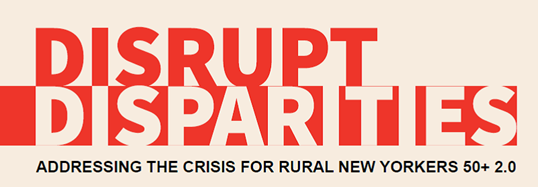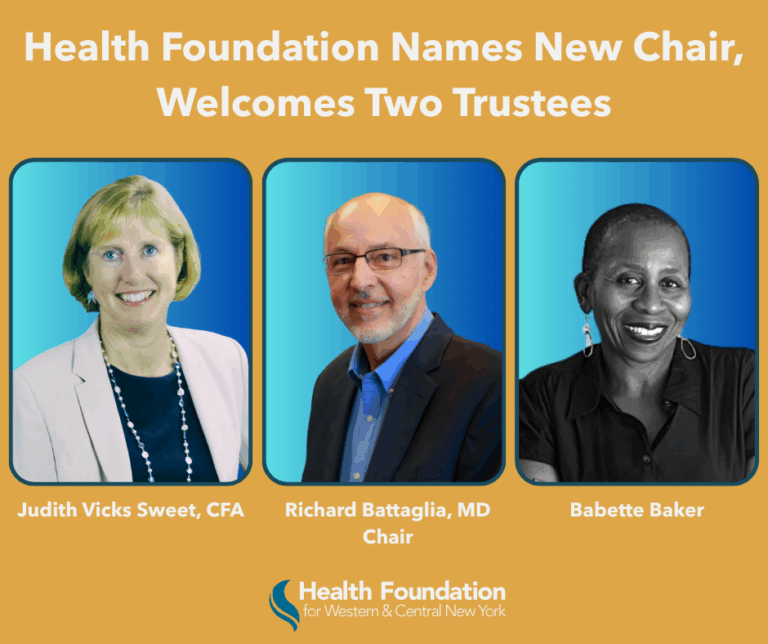ALBANY, N.Y. – Older rural New Yorkers are struggling to age in place due to a dearth of affordable and accessible housing, while many older adults who no longer drive or don’t have access to public transportation or privately owned vehicles face numerous challenges in obtaining rides to such essential services as medical appointments and grocery stores.
These trends pose significant challenges and demand solutions, according to a new research report and policy paper released by AARP New York on Dec. 6, 2022, during a virtual event moderated by Rex Smith, editor of The Upstate American and editor emeritus of the Albany Times Union.
Disrupt Disparities: Addressing the Crisis for Rural New Yorkers 50+ 2.0 is the latest in AARP New York’s multi-year initiative, Disrupting Racial and Ethnic Disparities: Solutions for New Yorkers 50+, which began in January 2018.
The housing and transportation report follows last year’s AARP New York research report that found older rural New Yorkers are sicker, more disabled, and have less access to health care and high-speed internet than those living in urban and suburban areas. The policy report released in November 2021 focused on health, caregiving, telehealth and broadband as they impact rural New York, a sprawling area with over a million residents – more people than six states and Washington, D.C.
“Rural New Yorkers still face longstanding challenges such as social and geographic isolation and far less access to adequate housing and public and private transportation options,” said AARP New York State Director Beth Finkel. “This latest AARP report shows how these disparities impact the lives of all rural residents, especially those 50 and over, while at the same time providing achievable solutions. AARP New York will continue to support these efforts to make rural New York a more livable place for the 50-plus and residents of all ages.”
“We are grateful to AARP NY for continuing to steward important conversations on how we can improve the lives of older adults in our rural communities. The evidence is clear that social determinants of health like transportation, housing and health care access remain significant contributors to health outcomes for older adults and all people across New York State, and we have a shared imperative to work together on addressing these issues,” said Nora OBrien-Suric, PhD, President, Health Foundation for Western & Central New York. “We look forward to continuing to collaborate with AARP NY and our other dedicated partners on long-term, systemic solutions that help older adults across our state thrive.”
“Older adults should be able to enjoy their golden years but for too many, reaching these years presents challenges in accessing affordable housing, transportation, nutritious food, health care, high-speed internet or caregiving resources,” said U.S. Senator Kirsten Gillibrand. “Access to these resources is even more difficult for older adults living in rural areas of the state. I am grateful to AARP and its partners for once again hosting this conference to highlight the challenges and disparities our elders and their caregivers face across rural New York, and their efforts to address their needs.”
“Rural New Yorkers often feel left behind when confronted with a lack of safe, affordable housing, access to public transportation, and inadequate high-speed internet. These challenges can be especially difficult for seniors,” said New York State Senator Rachel May, Senate Aging Committee Chair. “Thanks to AARP’s continuing effort to disrupt these disparities, state policymakers are undertaking efforts to help older adults in rural areas so they can modify their homes to better age in place, have better access to diverse transit options, and will soon see higher-speed broadband coming to their blocks. As the upcoming legislative session begins, I will continue to push for solutions to advance these efforts.”
“Everywhere I go in the North Country, I hear about issues with housing affordability,” said Assemblymember Billy Jones, Assembly Aging Committee member. “This is impacting older New Yorkers and combined with inflation, is causing many to not to be able to age in place. The lack of transportation in rural communities is also a major problem, which is why I carry legislation to help cover those costs. We must all work together to find solutions to help older New Yorkers age in place and make sure they have access to the resources they need.”
“The findings of AARP’s report further underscore the urgent need to address generations of systemic disinvestment in our rural communities, which have driven us to full-blown crises in affordable housing access, dwindling healthcare services and reliable transportation,” said State Senator Michelle Hinchey, Chair, Senate Agriculture Committee. “Older New Yorkers in rural parts of our state face a disproportionate burden due to these inequities, and it is paramount that we make real policy changes to finally fill the gaps harming rural residents. I thank AARP for keeping these issues at the forefront, and I’m proud that many of the identified solutions in this report highlight legislative items I’ve championed, including my work on the RESTORE program, among other forward-looking priorities to expand housing affordability and accessibility.”
“As the first designated age-friendly state in the nation and a state embarking upon the creation of a Master Plan for Aging, New York is committed to further addressing the core domains of livability that support opportunities for older adults and New Yorkers of all ages, including affordable and enabling housing options as well as transportation access statewide,” said New York State Office for the Aging Acting Director Greg Olsen. “Under Governor Hochul’s leadership, New York’s $25 billion five-year housing plan includes an investment of $300 million to build affordable, age-friendly housing for older adults and includes additional funds for rural communities under the NY Forward Plan. Transportation options are also critical to help maintain independence, combat isolation, and to access services and community outlets. Through the Master Plan, options must be considered to leverage all existing assets and create or expand a variety of options.”
- Over 28% of housing units in New York state’s rural counties were built before 1940;
- Between 2010 and 2020 about 15,600 housing units were lost across 21 largely rural New York state counties;
- About 1 in 5 homeowners and nearly half of renters in rural areas of New York state spend more than 30% of their incomes on housing;
- Caregivers, government agencies and community-based organizations continue to face obstacles to providing transportation services to non-driving older adults;
- Public and community-based entities that provide transportation services to older adults gave over 445,000 rides in 2021;
- Nonprofit organizations lost staff and volunteers during the pandemic and are struggling to rebuild those ranks.
To address these and other problems, the new report proposes solutions that include:
- Increase funding for the state’s Access to Home program that allows people with disabilities and older New Yorkers to make home modifications that allow them to stay in their homes;
- Boost funding for the state’s RESTORE program that helps low- and moderate-income older adults to fix home infrastructure issues that threaten people’s health and safety;
- Increase funding for public and private entities that provide transportation to older non-driving residents;
- Facilitate public-private partnerships between transit agencies and private and public educational institutions to build out accessible transportation services for rural residents.
AARP New York and its volunteers will make the case for those recommendations and more at the State Capitol and beyond when the 2023 state legislative session begins in Albany in January.
Follow us on Twitter: @AARPNY and Facebook: AARP New York
About AARP
AARP is the nation’s largest nonprofit, nonpartisan organization dedicated to empowering people 50 and older to choose how they live as they age. With a nationwide presence and nearly 38 million members, AARP strengthens communities and advocates for what matters most to families: health security, financial stability and personal fulfillment. AARP also produces the nation’s largest circulation publications: AARP The Magazine and AARP Bulletin. To learn more, visit www.aarp.org, www.aarp.org/espanol or follow @AARP, @AARPenEspanol and @AARPadvocates, @AliadosAdelante on social media.
###



